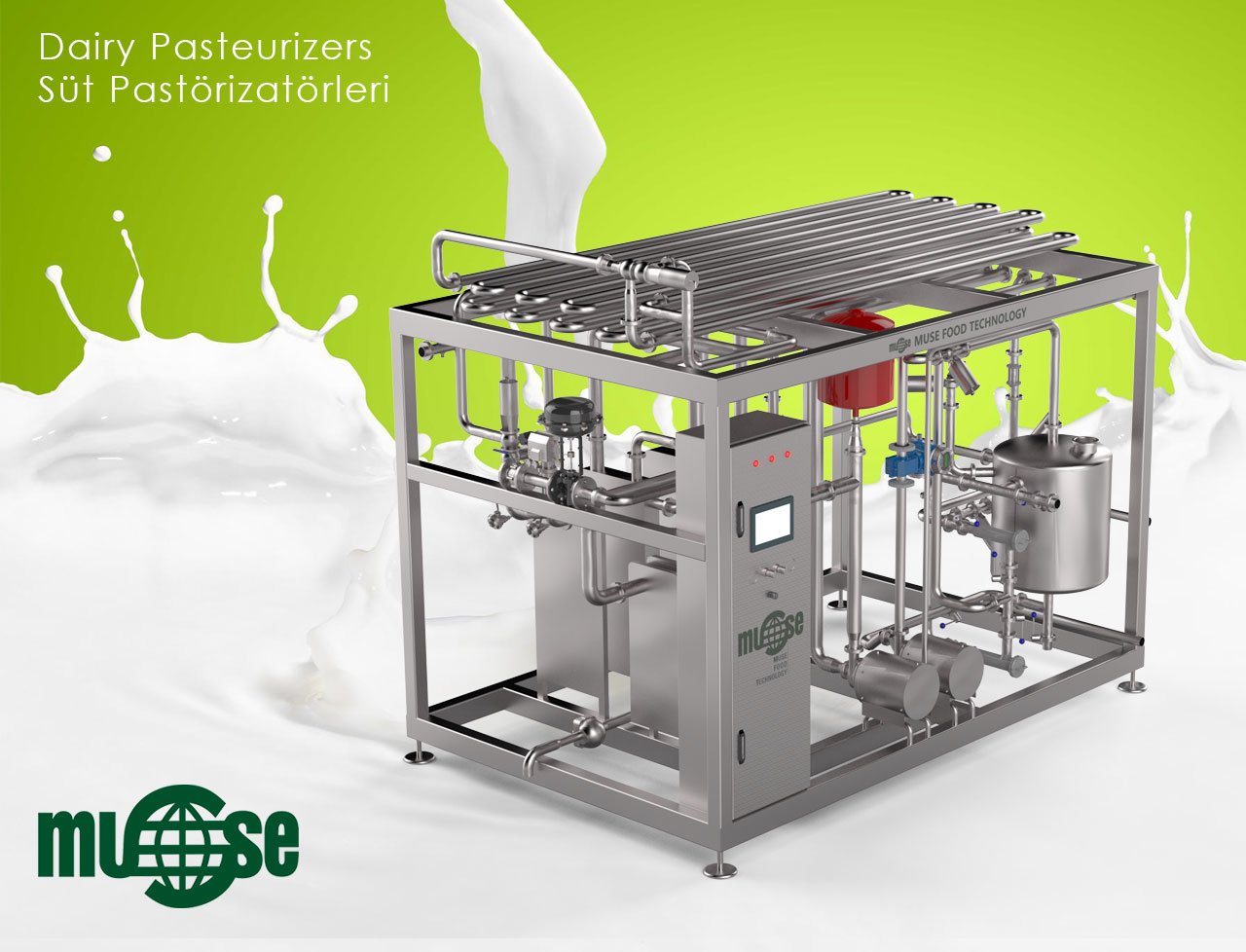
Pasteurizers: Working Principles
Pasteurization is the process of heating a product to a specific temperature, holding it at that temperature for a set duration, and then rapidly cooling it to eliminate harmful microorganisms.
-
In Milk: Pathogenic microorganisms, particularly bacteria like tuberculosis and brucellosis, are destroyed.
-
In Fruit Juice: Yeast, mold, and bacteria that cause spoilage are eliminated while minimizing flavor loss.
Key Components of Pasteurizers:
-
Steam System: Acts as the heat source. Steam transfers heat to the product via heat exchangers.
-
Heat Exchanger: Typically a plate heat exchanger (PHE), responsible for heat transfer to the product.
-
Holder System: Keeps the product at the required temperature for a specified time (e.g., 72°C for 15 seconds for milk).
-
Balance Tank: Ensures continuous product flow into the system and controls liquid levels.
-
Pump Group: Circulates the product and auxiliary liquids (e.g., cleaning water) through the system.
-
Control Panel: Automatically monitors and adjusts temperature, pressure, and flow data.
Step-by-Step Operation:
A) Pre-Heating
-
The product enters the balance tank.
-
A water or product pump transfers it to the heat exchanger.
-
In the heat exchanger’s regeneration section, the incoming cold product is pre-heated by the outgoing hot pasteurized product via cross-flow. This heat recovery saves energy.
B) Pasteurization Heating
-
The steam system activates.
-
Heat is transferred to the product via steam in the heat exchanger.
-
The product reaches the target temperature (e.g., 72–85°C for milk, 90–95°C for juice).
C) Holding (Holder System)
-
The product is held at the target temperature in a tubular or spiral holder line for a set time.
-
This step is critical for complete microbiological inactivation.
D) Cooling
-
The hot product re-enters the heat exchanger.
-
It is cooled using cold raw product or chilled water for heat recovery.
-
The product is typically cooled to 4–8°C before being sent to storage tanks or filling machines.
CIP (Cleaning-In-Place)
Pasteurizers are regularly cleaned using an automated CIP system:
-
Chemical detergents, hot water, and sometimes disinfectants are circulated to sterilize the entire system.
Automation & Safety
Modern pasteurizers use sensors to monitor temperature, pressure, and flow rates:
-
If the target temperature is not reached, the product is automatically diverted back to the return line, ensuring hygiene.
-
All parameters are controlled via a PLC (Programmable Logic Controller) panel.
Industry-Specific Variations:
-
Milk: Uses HTST (High-Temperature Short-Time) or UHT (Ultra-High Temperature) pasteurization.
-
Fruit Juice: Often uses flash pasteurization (short-time high heat) to minimize vitamin and flavor loss.


